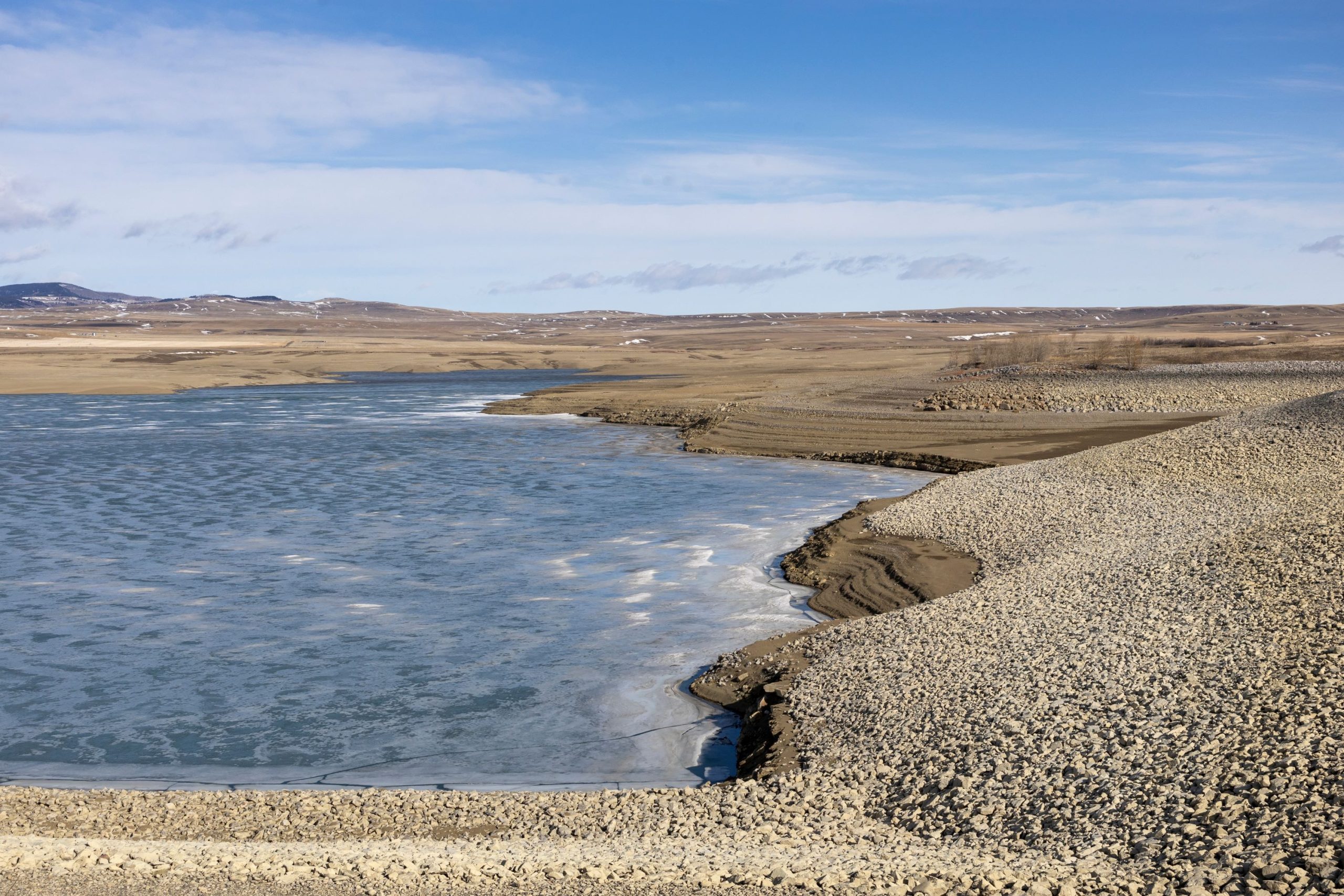
Navigating Drought Challenges
Alberta’s Water Management Initiatives and the Push for Sustainable Solutions
Back to: News & Updates
No matter where you are in Alberta, the difference in moisture patterns this winter was notable and has created a compounded effect after multiple years of moisture deficiency. The water levels in reservoirs in Southern Alberta that support the irrigation infrastructure are below the yearly average (see figure 1) and bi-weekly updates can be found online in the Provincial Reservoir Storage Summary. According to a Saddle Hill County update on February 14, many areas of the Peace Region have not seen snowpacks this low in approximately 50 years.

Planning for the year ahead is already well under way as the Government Alberta has established that the province is currently in a Stage 4 water shortage management level. This means that large scale basin and provincial drought condition areas are anticipated throughout the province. Collaboration between multiple government ministries to develop and monitor resiliency plans have been in development. The Government of Alberta has increased their monitoring and data analysis capabilities to better predict river flows, apportionment of water levels across Alberta borders, reservoir levels, and water demand. The various apportionment agreements between the Prairie provinces and US government establish the amount of water that must flow across the border. For the major rivers that cross into Saskatchewan, Alberta is required to let at least 50% of the river flow pass through our province and into Saskatchewan. In 2023, the apportionment level was calculated to equal 61%. Increased monitoring and analysis modeling was considered necessary to better manage the apportionment water amounts so that Alberta uses the full share it is entitled to. The most up-to-date water monitoring data can be found at alberta.ca/drought-current-conditions.
The current priority is to establish water sharing agreements among the large water rights licensees from the major basins. Water diversions in the province are managed through water licenses granted under the Water Act, where a license holder would be permitted to divert and withdraw an allocated amount of water from a specified source. A water sharing agreement is a voluntary working agreement between major license holders of a specific water basin that, ideally, establishes how the burden of reduced water access is shared fairly, as opposed to determining access simply by license priority which could cause some lower priority license holders to be left high and dry. The water sharing agreement negotiations kicked off in early February and have engaged over 90% of the licensees and include municipalities, industrial water users, agricultural processors, and irrigation districts working to collaborate to ensure that no user is left behind for access to water. Individuals can sign up for notifications and updates as new reports are posted at alberta.ca/news-subscriptions.
Being aware of the potential drought conditions, the potential limits to water access, and what can be done to conserve water is critically important for every canola producer and all Albertans. Alberta Canola is staying on top of these ongoing issues and continues to ensure the voice of the crop production sector is heard in every step of the process. Alberta Canola is also advocating for long-term improvements to large-scale and on-farm water management strategies that enable the province and all its sectors to be more resilient and efficient in managing this critical resource. Water in Alberta needs to be managed and protected through a coordinated stewardship effort of municipalities, industries, the agricultural sector, and Alberta’s residents. Managing water through drought conditions is key in sustaining agricultural livelihoods which have crucial economic impact in our province and to our abilities to help feed the world.
By Will Holowaychuk
Policy Analyst
Additional Resources
- More information on drought conditions and what the province is doing at alberta.ca/drought
- For more information and tools to assist with on-farm business management and production go to alberta.ca/farming-in-dry-conditions
- Check out the interactive map with water measure updates from the provincial government at rivers.alberta.ca
